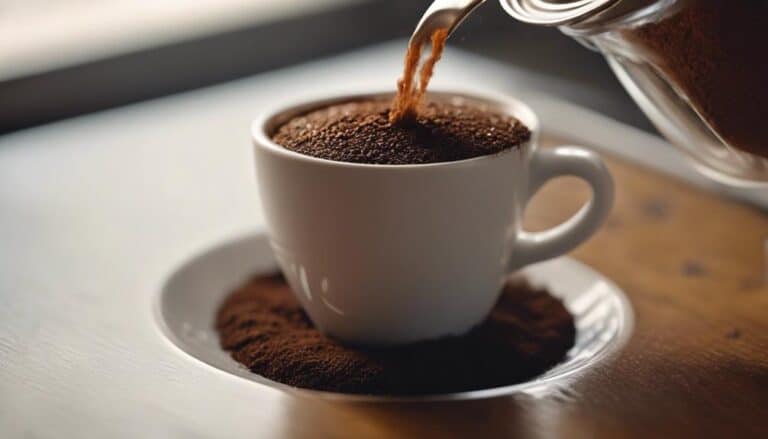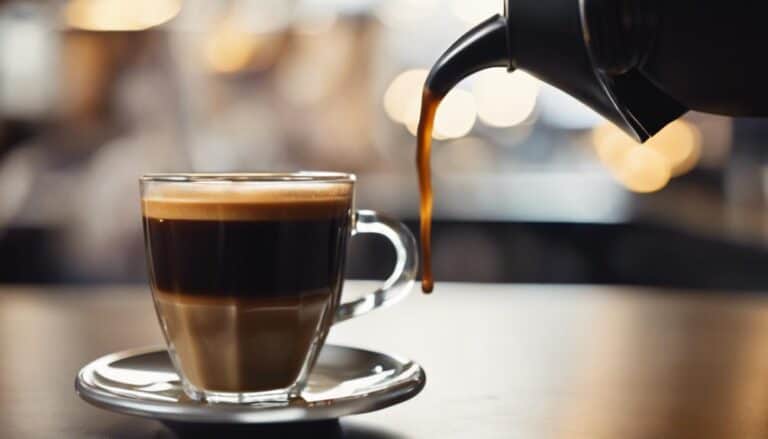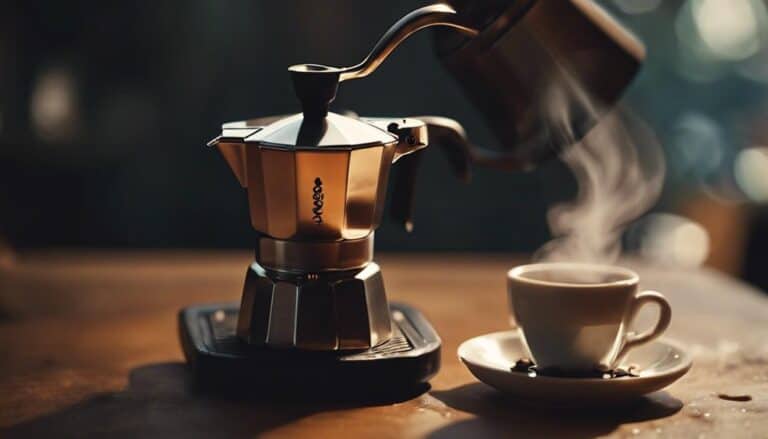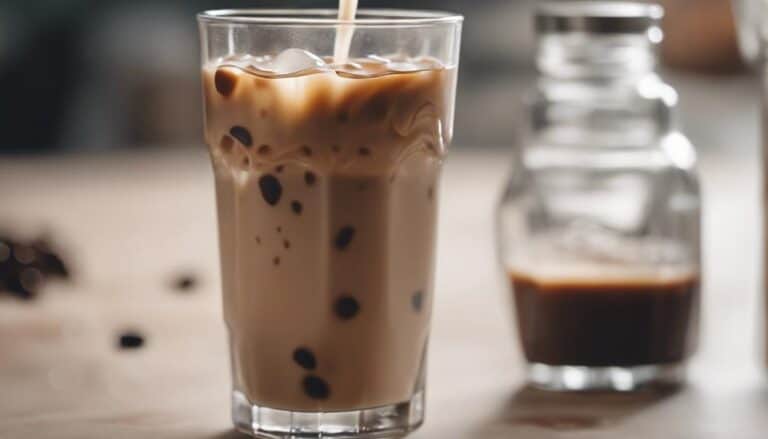How Much Caffeine in a K-Cup?
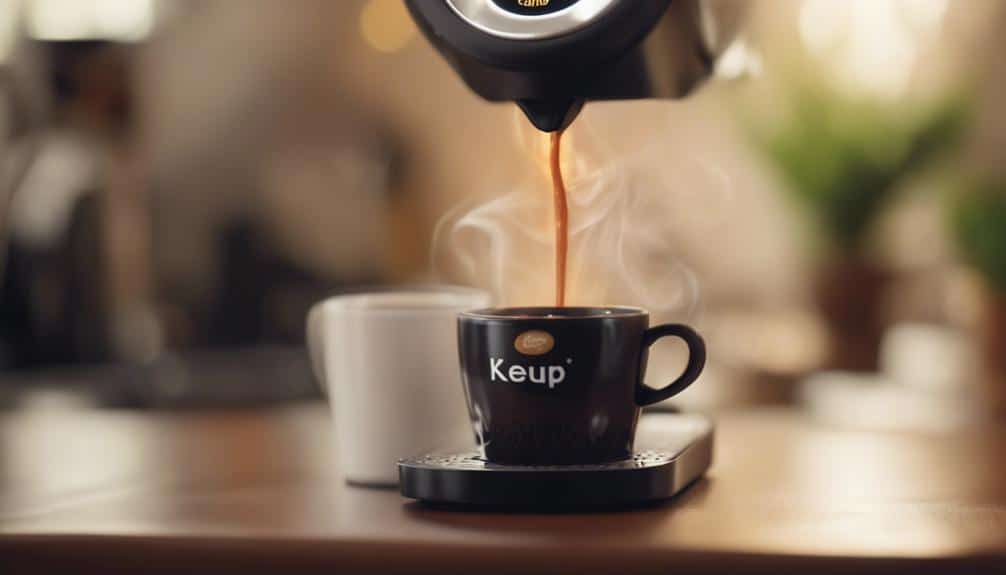
As I savor my morning cup of coffee, I often ponder the caffeine content in each K-Cup. The range of 75 to 125 milligrams per 6 fluid ounces is quite standard, but what factors contribute to this variance? Light roast versus dark roast, Arabica versus Robusta beans – intriguing distinctions that hold the key to revealing the mystery of caffeine levels in our favorite brew. Join me as we explore the intricate world of K-Cup caffeine content and discover how to tailor our coffee choices to suit our caffeine needs.
Caffeine Content in K-Cup Coffee
On average, a single K-Cup® coffee pod contains between 75 to 125 milligrams of caffeine per 6 fluid ounces, with light roast varieties generally exhibiting higher caffeine levels than dark roast counterparts. This difference in caffeine content is due to the roasting process, where lighter roasts retain more caffeine compared to darker roasts. K-Cup® pods commonly use Arabica beans, which inherently have lower caffeine levels than Robusta beans. Additionally, the importance of coffee grinds fineness plays a significant role in determining the caffeine concentration in the final brew.
Understanding the levels of caffeine in K-Cup® pods is essential for those seeking a specific caffeine intake. Whether it's for a morning pick-me-up or an afternoon boost, being aware of the caffeine content allows individuals to tailor their coffee consumption to their desired energy levels. Light roast K-Cup® pods, with their higher caffeine content, are a preferred choice for those needing that extra kick. Being informed about the caffeine content in coffee pods empowers consumers to make choices that align with their caffeine preferences.
Factors Affecting Caffeine Levels
Factors impacting the caffeine levels in K-Cup pods include the roasting level of coffee beans, the type of beans used, grind size, brew time, water temperature, and the coffee content in extra bold pods.
The roasting level of coffee beans can affect the caffeine content in K-Cup pods, with darker roasts generally having slightly less caffeine than lighter roasts. Arabica beans, commonly used in Keurig K-Cup pods, tend to have a smoother flavor but slightly lower caffeine levels compared to Robusta beans.
The grind size of the coffee grounds can influence caffeine extraction during brewing, with finer grinds typically resulting in more caffeine in the final cup. Additionally, brew time and water temperature are critical factors affecting caffeine levels in K-Cup pods, as they determine the efficiency of caffeine extraction.
Extra bold K-Cup pods, characterized by higher coffee content, usually contain elevated caffeine levels, providing a bolder and more robust flavor profile.
Light Vs. Dark Roast Caffeine

Light roast K-Cups generally contain slightly higher caffeine levels compared to their dark roast counterparts, with the difference being minimal yet noticeable. This discrepancy in caffeine content arises due to the roasting process. Lighter roasts retain more of the natural caffeine present in the coffee beans, resulting in a higher caffeine intensity in the final product.
On the other hand, dark roast K-Cups, while offering a smoother flavor profile, may have slightly lower caffeine levels. When choosing between light and dark roast K-Cups, personal preference plays a significant role. Some individuals prefer the bolder taste and potential health benefits associated with light roast's higher caffeine content, while others favor the milder flavor of dark roast despite its marginally reduced caffeine levels.
Ultimately, the decision between light and dark roast K-Cups depends on balancing caffeine intensity with flavor preferences to create the perfect cup of coffee.
High Caffeine Options
When seeking high caffeine options in K-Cups, consumers can choose Starbucks 2X Caffeine K-Cup coffee, which packs 260 mg of caffeine per 8-ounce cup. Light roast K-Cup pods generally offer higher caffeine content compared to dark roast varieties. For an even stronger brew, Extra bold K-Cup pods contain 20% more coffee and caffeine. When brewing K-Cup pods, using the highest water setting can result in more caffeine extraction, intensifying the kick. However, if you prefer a milder option, Green Mountain Half Caff K-Cup provides a balanced choice with half the caffeine content of a regular roast.
| High Caffeine Options | Caffeine Content (per 8-ounce cup) |
|---|---|
| Starbucks 2X Caffeine | 260 mg |
| Light Roast | Higher content compared to dark roast |
| Extra Bold | 20% more coffee and caffeine |
| Brewing | Higher extraction with max water setting |
| Green Mountain Half Caff | Milder option with half the caffeine |
Regulating Caffeine Intake
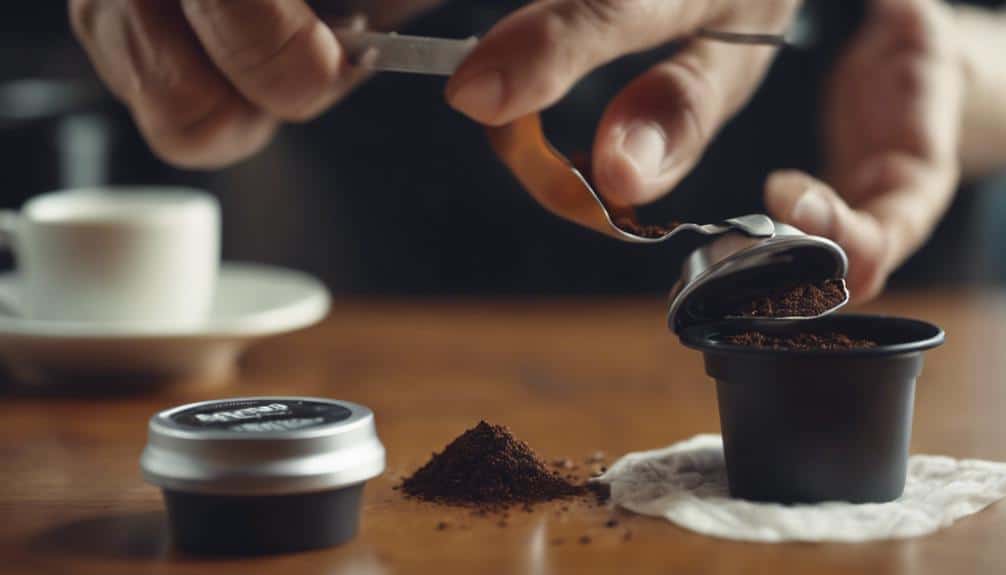
To effectively manage my caffeine consumption, understanding the variables influencing caffeine content in K-Cup coffee is essential. Light roast K-Cups generally have a higher caffeine content than dark roasts, providing around 75-125 mg of caffeine per 6 fluid ounces, impacting my overall caffeine intake.
K-Cups often use Arabica beans, which have lower caffeine levels compared to Robusta beans, influencing the final caffeine content in my cup. The grind size of the coffee grounds also plays a role in the concentration of caffeine in the brew, affecting my caffeine intake per standard cup of coffee.
Factors such as brew time, water temperature, and the quantity of coffee grounds used can further influence the extraction of caffeine in K-Cup coffee. By being mindful of these variables and opting for lighter roasts or adjusting brewing parameters, I can regulate my caffeine intake to suit my preferences and needs.
Balancing these factors allows me the freedom to enjoy my favorite K-Cup coffee while managing my caffeine consumption effectively.
Conclusion
To sum up, the caffeine content in K-Cup coffee pods can vary depending on factors such as roast level, bean type, and brewing method. Light roast K-Cups generally contain more caffeine than dark roast varieties, with extra bold pods having even higher levels.
By being aware of these factors, one can effectively regulate their caffeine intake while enjoying their favorite K-Cup coffee.


